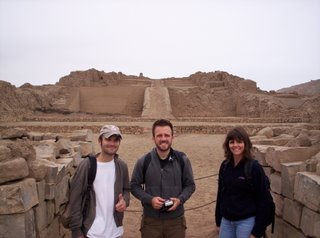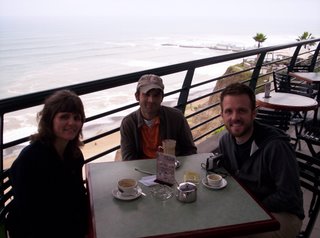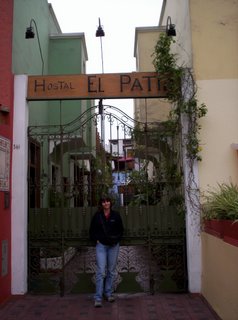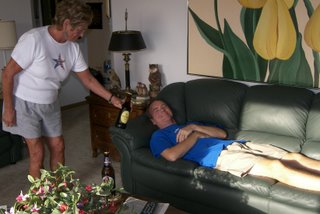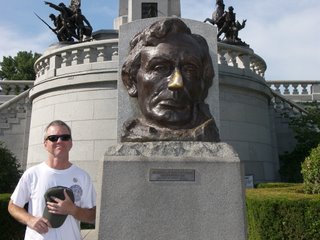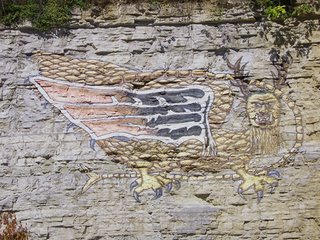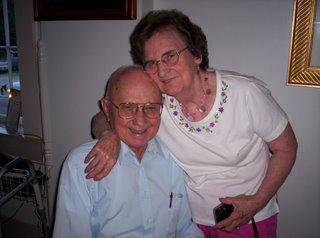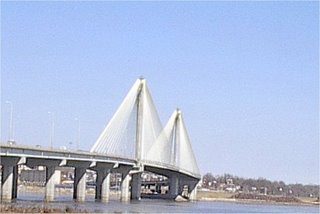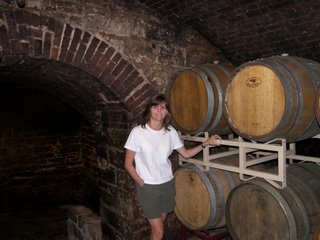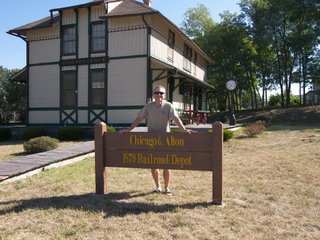August 13, 2006
We have a very early flight today. We rise at 3:15am to catch a 6am flight to Cuzco, capital of the Incan Empire. At the airport we meet up with a third nephew John. Once at Cuzco we head immediately to our hotel but we are too early to check in. We sit in the breakfast room and have some bread and Coca tea. The coca tea is supposed to stave off the effects of altitude sickness. None of us knows if we are going to succumb or not. Afterwards we walk to the central Plaza de Armas to see the cathedrals. Cuzco is having a military parade in the square. We watch for a while. All the cathedrals in town are built on top the bases of Inca temples. The Spanish had torn down the temples and built churches to reinforce their control. The Inca bases can still be seen throughout town. There is a sharp contrast between the Inca stonework and Spanish construction. The Inca stones fit together perfectly with no crack whatsoever between them, whereas gaps and mortar joints abound with the Spanish. Whenever an earthquake hits, the later construction tumbles down while the Inca bases survive.
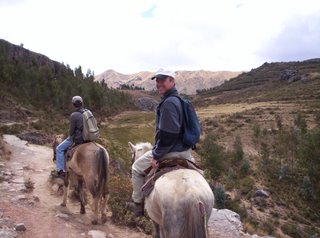 Afterward we catch a cab uphill to the Inca fortress of Sacsayhuaman (pronounced Sexy Woman). At the entrance we are persuaded to take a horseback ride to some of the other Inca sites further uphill. It is fun, but our butts are not conditioned for a 3-hour ride! We stop at Pukapukara, a military outpost, and Tambomachay, a spring that may have been a royal spa. We hike around them, but there are no interpretative signs anywhere so we have to use our imagination for their purpose. The Spanish carted off most of the upper stones for their own construction projects. The altitude is 12,000 feet and we are getting severely winded on the walks and we have only a few snacks to provide energy.
Afterward we catch a cab uphill to the Inca fortress of Sacsayhuaman (pronounced Sexy Woman). At the entrance we are persuaded to take a horseback ride to some of the other Inca sites further uphill. It is fun, but our butts are not conditioned for a 3-hour ride! We stop at Pukapukara, a military outpost, and Tambomachay, a spring that may have been a royal spa. We hike around them, but there are no interpretative signs anywhere so we have to use our imagination for their purpose. The Spanish carted off most of the upper stones for their own construction projects. The altitude is 12,000 feet and we are getting severely winded on the walks and we have only a few snacks to provide energy. After finishing the horseback ride, we head in to see Sacsayhuaman. It is a hilltop fortress. Even though the upper sections of the walls are gone, it is very evident this was a substantial fortress rivaling those made in Europe. It is quite impressive. I can’t believe the Incas were not able to withstand the Spanish siege. It must have been too little too late.
By this time most of us are succumbing to lack of sleep, lack of food, sunburn, and altitude sickness. We can barely walk. There are no taxis in the parking lot despite the guidebooks comments otherwise. We trudge downhill till a taxi drives by. We head to dinner immediately, but it is a chore and our stomachs are queasy. We are exhausted and complaining of headaches. Aimee and I hit the hay when we return to the hotel room at 6:00pm. It is freezing in our room and we go to bed with all our clothes on!


